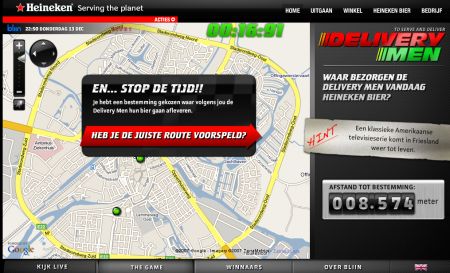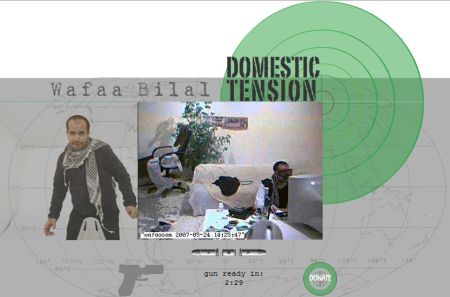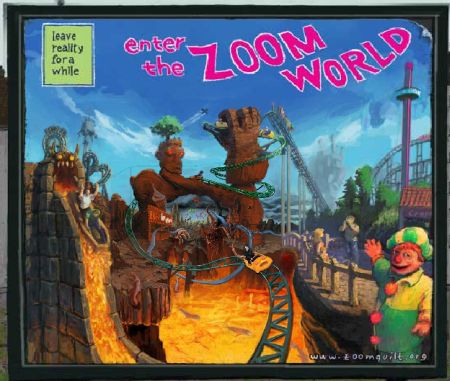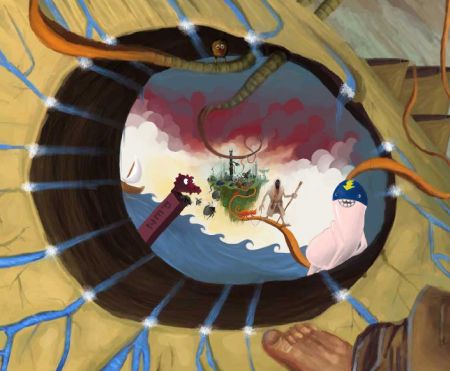von Roland Hachmann | Dez. 17, 2007 | Ad News, Blog, Digital Marketing, Marketing, Mobile Marketing, Online Advertising
Heineken in the Netherlands has launched a new advergame which looks interesting. The game asks playes to spot and track the delivery men of Heineken around the Netherlands and find out what their next stop will be. Whoever guesses correctly first, gets the chance to win a Nokia phone. So in a way, this game play is not that complicated or creative.

What I admire, is something completely different: Apparantly, these delivery men are tracked in real time with real journey data, during the regular working hours. And this is remarkable. I have also worked for clients with a huge fleet of delivery vehicles and I do appreciate the fact that Heineken managed to include their drivers into this game. Creatives usually come up easily with lots of brilliant ideas how to connect the mobile workforce of a client with a webpage via all sorts of mobile devices like phones or GPS tracking devices. But organisational reality most of the time kills these ideas.
So this won’t have been easy to push through the internal, most likely rather political, approval and commitment chain in order to get the buy in of all the different departments (marketing, distribution, logistics, etc.). Kudos, I like that.
(via)
von Roland Hachmann | Nov. 5, 2007 | Blog, Digital Culture, Digital Marketing, Marketing, Mobile Marketing, Online Advertising, Social Media Marketing
Clever, very clever indeed. Google announces the Open Hand Set Alliance and liberates the 33 participating mobile phone operators from the claws of proprietary systems. From the Google Blog:
Android is the first truly open and comprehensive platform for mobile devices. It includes an operating system, user-interface and applications — all of the software to run a mobile phone, but without the proprietary obstacles that have hindered mobile innovation. We have developed Android in cooperation with the Open Handset Alliance, which consists of more than 30 technology and mobile leaders including Motorola, Qualcomm, HTC and T-Mobile.
It appears to carry very similar objectives as OpenSocial which was announced only last week. Google seems to favour open standards, so that the web as a plattform and mobile phones as the future personal device for everything will stay open and free. This should enable innovation to the benefit of the user, no doubt about that! But it might also serve Google quite well.
Why? I can only guess: Googles revenue models are still mostly built on advertising. So Google needs scalability in customer reach, which they can only keep increasing with ready access to information and users. As social networks are obviously becoming the dominating platforms for users to interact with, and mobile devices probably being the first choice for going „online“, then Google needs to be able to freely play on these grounds.
In the future, I think the key to revenue will most likely not reside in just delivering content, i.e. producing or transporting it, since there will be soooo much of it. And it is very labour intensive to produce it. Instead, it is much more efficient to
- intelligently aggregate and sort content (which Google already does)
- adequately aligning this content to the needs, preferences – and most importantly: intentions of the users.
Regarding the second point, I think it is fairly obvious that Google should be way ahead of the competition in gathering the necessary user data. Think about Google Toolbar, Google Analytics and Google AdSense, nevermind the main site, the search engine itself. They should have better tracking data than anybody else, which they can put to work for solving the second point above.
One thing that can stop the (nearly) endless scaling of Google’s model into the long tail of every single social media profile and mobile device is „artificial“ restrictions such as walled gardens and operating systems. So: very clever to launch initiatives to at least partially open up social networks and mobile phone operating systems.
von Roland Hachmann | Okt. 15, 2007 | Ad News, Blog, Digital Marketing, Marketing, Marketing Trends, Online Advertising
Andrew Keen is a well known critic of the whole Web 2.0 user generated („communistic“) cult of the amateur that is shaping our media consumption („prosumption“) these days.
Now, on Ad Week, he contributed an Op Ed about Web 2.0 being the death of advertising. It is quite a rant, you’ll be amazed:
Web 2.0 is, in truth, the very worst piece of news for the advertising industry since the birth of mass media. In the short term, the Web 2.0 hysteria marks the end of the golden age of advertising; in the long term, it might even mark the end of advertising itself.
At first I thought he must be joking. And then I looked up his name on Wikipedia – finding out that he must be serious about these things.
Don’t get me wrong – the new media production and consumption setup has changed (and will continue to change) and has had an effect on the advertising business. But instead of complaining about it, we should look at the possibilities and opportunities of the new landscape.
Many of the new technology enabled trends are somewhat user friendly, if not at least user-centric. So why should we not adopt and keep them? Really, there is no time for complaining. It’s a no brainer, that (mostly) bad advertising was first to adopt the new setup. Now we should try to figure out how to continuously create good advertising given the new circumstances.
Let’s not sit there like the music industry (as Andrew Keen writes):
Evidence of the crisis of mass media is depressingly ubiquitous. The recorded music business is in free-fall, the tragic victim of mass digital kleptomania.
There are alternative ways to sell music, Steve Jobs proved it with iTunes. A much more user centric model. Might not yield as high a margin as selling CDs in heavy jewel cases transported across the globe, but that’s the way it goes. Horse carriages were out of fashion at some point, too. Musicians like Madonna and Radiohead seem to get it.
The next couple of quotes are amazing:
What Web 2.0 is doing, compounded by the online consumer’s shrinking attention span and his or her hostility towards the „inauthenticity“ of commercial messages, is radically deflating the value of advertising. […]
As the scarcity of mainstream media is replaced by the abundance of Web 2.0’s user-generated content, advertising itself is being painfully commoditized. […]
No new technology—neither the false dawn of mobile, nor the holy grail of personalized, targeted advertising—is going to save the advertising business now. No, the truth is that advertising can only be saved if we can re-create media scarcity. That means less user-generated content and more professionally created information and entertainment, less technology and more creativity. The advertising community desperately needs more gatekeepers, more professional creative authorities, more so-called media „elites“ who will curate, filter and organize content. That’s the way to re-establish the value of the message. It’s the one commercial antidote to Web 2.0’s radically destructive cultural democracy.
It almost sounds like advertising is a form of art worth protecting for its own good.
Instead, the value of the message should come from relevance, in terms of content, targeting and timing – and of course the creative idea! (This, by the way, has always been the case. But not all advertising in the past has had good content, targeting or timing. Nevermind a creative idea.) A valuable message should still resonate, even when surrounded by a cacophony of user generated clutter.
Only now it is not so easy to spread bad advertising any longer, because the audience has more choices and more control.
What do you think people have thought about bad advertising in the last 50 years? Yes, they fast forwarded, or got a new drink from the fridge, or switched the channel. Or cursed at the TV. Or flicked over to the next page. Bad advertising always existed, and yes, it has always been a pain.
Good advertising, however, has (almost) always found the attention of the audience. And it still does. It has even become a lot easier for the audience to seek and find the content of those campaigns that they’re really interested in. At any time of the day. And it has become much easier to share good advertising, forwarding the content, (clips, emails, site URLs) to their friends.
While Web 2.0 has made it much more difficult for traditional advertising mechanism to work or break through the increasing clutter, there is also a lot of opportunity, new ways for attracting and involving users. Sometimes even beyond what traditional advertising mechanisms are capable of delivering.
von Roland Hachmann | Mai 23, 2007 | Blog, Digital Culture, Digital News
This guy lets people shoot at him with a paint gun via the web. It’s meant to show the daily struggle people living in Iraque face…

At YouTube you can see his VideoBlog, where he gives updates about everything, including where he’s been hit. You can see the walls being covered in paint, it’s amazingly cruel. But it certainly makes you think, and that was the point.
von Roland Hachmann | Feb. 17, 2007 | Blog, Digital Culture
I love these „Zoomquilt“-Animations, they’re great:
Several artists gathered to produce an endless zoom animation where you zoom into one digital art only to enter another one through the center. All the way, until you reach the first one again. Brilliant. Each artist needs to make sure that their drawing fits with the previous and the next one following. At the end a flash programmer puts it together…
Here is a link to the Interactive Zoomquilt. And here is an automatic Zoomquilt.
There was already a previous project: Zoomquilt 2005. I already blogged about this on my German blog. That one was a little smaller, as there not as many artists involved.





 Wo ich sonst so bin...
Wo ich sonst so bin...